Lyme Disease
Spread/Range Infection Stages Symptoms Misdiagnosis Diagnosis Testing Impact on vision Prevention Nutrients Treatment
Lyme disease, arising from a bacterial infection transmitted by deer ticks, is a condition whose chronic condition causes eye and vision disturbances, head, face and neck symptoms, heart problems, immune system weakness, endocrine disorders, damage to locomotor systems and the reproductive system. It is frequently misdiagnosed by physicians because of the wide range of confusing symptoms. Further, testing for the condition sometimes results in false negatives and the hallmark bullet rash may not always appear.
Vitamins & Supplements
Essential |
Essential |
Very Important |
Very Important |
Very Important |
Important |
Lyme disease is the best-known worldwide type of tick-borne disease, in which a tick, infested with a spirochete, bites a human and transmits the bacterium into the bloodstream. A spirochete is a bacterium with a spirally twisted form. The bacterium responsible for Lyme disease is called Borrelia burgdorferi, which burrows its way into various tissues in the body, in particular the collagen tissues. Each year, more than 30,000 cases of Lyme disease are reported nationwide, while studies suggest the actual number of people diagnosed with Lyme disease annually is likely around 300,000.
How Lyme Disease Spreads
 Lyme is caused by a corkscrew-shaped bacteria, a 'spirochete' (Borrelia burgdorferi) which burrows into connective and other tissues in the body most frequently causing aching and tender
muscles, sore joints, headaches, and even intermittent paralysis. Transmitted by deer ticks (Ixodes ticks), a pin-head version of the common wood tick, people who live, play, or travel in forested
and grassy areas are most vulnerable although the tick may be found almost anywhere that deer or white-footed mice are found. Although white mice are known to be part of the deer tick life cycle,
researchers now think that the bacteria life cycle may also include
birds, other mammals, and insects like mosquitos.
Lyme is caused by a corkscrew-shaped bacteria, a 'spirochete' (Borrelia burgdorferi) which burrows into connective and other tissues in the body most frequently causing aching and tender
muscles, sore joints, headaches, and even intermittent paralysis. Transmitted by deer ticks (Ixodes ticks), a pin-head version of the common wood tick, people who live, play, or travel in forested
and grassy areas are most vulnerable although the tick may be found almost anywhere that deer or white-footed mice are found. Although white mice are known to be part of the deer tick life cycle,
researchers now think that the bacteria life cycle may also include
birds, other mammals, and insects like mosquitos.
In the northeast, mid-Atlantic, and north-central U.S., Lyme is spread by the blacklegged deer tick (Ixodes scapularis), and on the Pacific coast, by the western-blacklegged tick (Ixodes pacificus). Other tick species not known to transmit Lyme disease include: Dermacentor variabilis (American dog tick), Ambylomma americanum (lone star tick), Dermacentor andersonii (Rocky Mountain wood tick), and Rhipicephalus sanguineous (brown dog tick).
Lyme disease develops into a multi-system inflammatory disease caused by an organism called a spirochete. It may start with skin rashes and/or flu-like symptoms, and then later spread to the joints, central nervous system, and other organ systems. According to recent research, "There are at least 5 subspecies of Borrelia burgdorferi, over 100 strains in the U.S., and 300 strains worldwide. This diversity is thought to contribute to the antigenic variability of the spirochete and its ability to evade the immune system and antibiotic therapy, leading to chronic infection."
Lyme can masquerade as fibromyalgia, carpal tunnel, multiple sclerosis, chronic fatigue, depression, thyroid disfunction, arthritis, heart arrhythmia and many other conditions. With the high number of new cases annually, Lyme is a more serious health threat than West Nile disease which is transmitted by mosquito bites.
Infection
Most people get Lyme from the bite of the nymphal, or immature form of the tick. Deer tick larva become infected in August and September when they feed on an animal that is infected. They molt over the winter and in May appear as poppy-seed sized nymphs. Humans become infected when they are bitten, usually from May through July. The adult deer ticks appear in October, and survive the winter in leaf litter. They begin laying eggs in late May, which hatch in July, and the cycle begins again.
Because the nymphal ticks are so tiny with a painless bite, many people do not even realize they have been bitten. The longer they remain on the skin, as long as several days before they drop off, the more likely they will transmit disease to your bloodstream.
If the tick that bites you (often on the nape of the neck, or in your hair) is infected (not all are) then within 3-30 days you may feel flu-like symptoms, headache and see the typical bulls-eye rash, a series of expanding circular red rings.
Uncommonly, pregnant women can pass Lyme to their unborn child, sometimes resulting in stillbirth. Human-to-human infection is thought a possibility by some but there is little evidence of this.
Stages of Lyme Disease
There are 3 stages of Lyme disease.
Stage 1. The bull's-eye rash is not the most common rash perhaps appearing only 20% of the time. One of the first symptoms of Lyme disease might be a bulls-eye rash, called erythema chronicum migrans, appearing in only 20% of cases. This rash usually radiates from the bite site as a red blotch or a central spot with a bull’s-eye ring around it. The rash usually appears from one to two weeks after transmission of the disease and can be accompanied by joint pain (particularly in the knees), chills, fever, fatigue, and "brain fog."
Seventy-five percent of Lyme disease patients will have a skin discoloration that lasts from several days to several weeks, and it gets larger. The bulls-eye rash, not the most common manifestation of Lyme, occurs only 20% of the time. "Rather, a uniformly red or reddish-blue rash, round or oval in shape, with sharply demarcated borders is most common."7 The rash commonly occurs in places that are moist and where clothing is snug: knee, groin, or armpit, occurring at prime tick season, such as the late spring and early summer. The multiple ways in which the immune system responds may explain the variety of outcomes.8 The spirochete that causes Lyme disease has the ability to avoid immune cell attacks by creating a "biofilm" around itself. This takes time to do, which may account for why Lyme disease can develop slowly.
Stage 2 includes multi-organ involvement with a predilection for affecting the cardiovascular and central nervous systems. As the disease progresses, the symptoms can include severe fatigue, stiff neck, persistent headaches, and often tingling or numbness of the extremities and face. The central nervous system is invaded. If the disease progresses, the symptoms do as well, which can include cardiac abnormalities as well as cognitive and mental problems.
Stage 3 is the chronic stage affecting the joints, peripheral nervous system, central nervous system, and subcutaneous tissues. This can occur months after the initial tick bite. Because the spirochetes causing Lyme disease can invade almost every organ system of the body, symptoms such as nausea or vomiting, and a change in bowel functions such as constipation, diarrhea, or cramping can sometimes occur. If the urinary system is infected, it can create cystitis, or irritable bladder syndrome. Other neurological symptoms often include Bell’s palsy (facial paralysis), poor balance, tremor, difficult speech, blurry vision, and neuropathies.
Common Symptoms of Lyme Disease
Not all of these symptoms may appear.
Acute Lyme Disease. Acute conditions appear suddenly and can be fairly severe. In the case of Lyme, they are the initial sign that something is wrong.
- Flu-like symptoms, sometimes with sore throat and swollen glands, nausea and vomiting, fever and chills
- Generalized soreness
- Headaches and migraines
- Fatigue
- Swelling. Often there is no swelling.
- Bull's eye rash. Frequently the rash does not appear, leading to misdiagnosis.
Chronic Lyme Disease. Once the disease is established and the bacteria invades a wide variety of tissue, then more diverse symptoms develop.
- Vision & eye conditions: blurry or double vision, lazy eye, pink eye (conjuntivitis), red eye (iritis), light sensitivity, eye pain and/or eye swelling,
- Musculoskeletal: Arthritis-like joint pain, muscle pain and cramps, loss of muscle tone and reflexes or muscle weakness. Pain that spreads throughout the joints, most often in the knees and elbows.
- Head, face, neck pain: Migraines and headaches, nerve sensations (tingling), allergen sensitivity, TMJ-like jaw pain, changes in the sense of smell and taste.
- Digestive & elimination systems: Upset stomach and poor digestion, irritated bladder, changes in weight, appetite loss, liver and kidney problems.
- Circulatory system: Heart irregularities such as palpitations, arrhythmia, murmur, chest pain.
- Respiratory system: Difficulty breathing, rib soreness, persistent fatigue.
- Nervous system: Numbness, prickling, tingling, burning, stabbing sensations; weakness, tremors, seizures; dizziness, balance issues, light-headedness; brain impairments such as encephalopathy, encephalitis, meningitis, encephalomyelitis.
- Cognitive functioning: Dementia, mental performance impairment, confusion, brain fog, disorientation, memory loss.
- Reproductive system: Reproductive system pain, problems, irregularities.
- Endocrine system: Thyroid, adrenal disorders.
- General health: Severe fatigue, disinterest in daily activities, lethargy, symptoms seem to appear and disappear irregularly.
Misdiagnosis is Common
Only 50–60% of patients recall a tick bite; the rash is reported in only 35–60% of patients; and joint swelling occurs in only 20–30% of patients. A significant number of people who contract Lyme disease are misdiagnosed during the early stages, leading to a progression of the disease. In one study, 54% of the patients were initially misdiagnosed. Of these, 13% did not present with a rash, and of those with a rash, 23% were not initially diagnosed correctly.6
I lived with misdiagnosed Lyme Disease for thirty years. It attacked almost every aspect of my body - and in recent years began to attack my right eye. It started with a blurriness that turned into seeing what looked like hundreds of fireworks, that continued into a dark circle in the center of my eye, and ultimately led to loss of sight in this eye.
I went to a highly respected Ophthalmologist and after thorough examination I was diagnosed with Oblique Inferior Retinopathy. He immediately sent me to a Retina Specialist group and they concurred, telling me nothing could be done.
From there I went to a renowned Retina Specialist in Boston hoping to receive some hope. He listened to my journey of living with Lyme Disease and after examining my eyes he looked at me and said, "Lyme loves the brain, and when it's finished with your eye that's likely where it will travel to next." I stood up, thanked him and walked out. I told myself, "This 'Doctor' has no idea who he's talking to. Not only did I not give up, I would not believe him. Thus began a mission to save my eyesight.
I found Dr. Grossman where I least expected; on a pamphlet I had picked up in my yoga class where he had recently been a guest speaker. I called him and after traveling almost four hours to meet him I had hope. He listened intently to me, he was present and understood every single word I said. Though I was blind in that eye, he never spoke of that. After an extensive examination, he said calmly and reassuringly, "We will work together to restore your eyesight." I believed him. And my healing began.
I started receiving eye acupuncture with Dr. Grossman along with a protocol of supplements and tinctures recommended through his extensive research on this condition. I am thrilled to say that through time and due diligence - and against all odds, my eyesight began to return.
I continue to see Dr. Grossman regularly for thorough eye exams at Somers Eye Center in Somers NY as well as for eye acupuncture at his practice at Integral Health Associates in New Paltz, NY.
My gratitude to this professional, kind and gifted man is boundless. Thank you for allowing me to share. I hope this can bring light and hope to anyone out there who is suffering. "We're all in this together."
Peace, light and love,
Essie Laflamme
sweetechostories.com
Diagnosis
The hallmark bulls-eye rash is called erythema migrans and occurs in about 20% to 70% of cases (depending who you talk to). The rash usually centers on the bite site, and often appears as a red blotch, or a central spot with a bull's-eye ring around it. The rash usually appears from 3 days to two weeks after you are bitten and may be accompanied by flu-like symptoms and/or 'brain fog.'
One of the reasons the bacteria causes such a wide variety of symptoms and makes them tenacious once established is that they have the ability to move around the body lodging into different tissues. With time they become more resistant to antibiotics; research indicates that the bacteria releases a substance "biofilm" that helps protect it from antibiotics.
Complicating a diagnosis is that Lyme resembles other tick-borne diseases with similar symptoms, but requires different treatment. For example, Babesia is a parasite carried by the deer tick that lives in red blood cells. Doctors rarely test for Babesiosis and if untreated patients have weak immune systems, it can be fatal. In 2010, an estimated 1,000 cases were reported in the U.S. Treatments need to target immune support and broad-spectrum antimicrobial actions rather than antibiotics. Babesiosis can be transmitted through the blood and is currently the most frequently reported infection transmitted through transfusion in the United States, responsible for at least 12 deaths.1
Testing for Lyme disease
Immediate treatment with antibiotics after a tick bite can often resolve a Lyme disease infection if caught early. Lyme disease is known to inhibit the immune system and 20-30% of patients have falsely negative antibody tests making the test fairly unreliable. The standard blood tests, which test only the antibody produced by the body in response to Lyme disease, have been shown to have many "false negative" readings. These tests include the ELISA, as well as the IgG and IgM Western Blot tests. A better test is an actual culture, but it is difficult to do, and most insurance will not reimburse for it.
Lyme Disease Impact on Vision
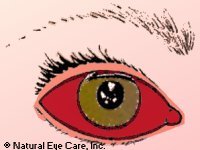
The symptoms of Lyme disease can mimic many health conditions. Eye conditions related to Lyme disease include:
- Conjunctivitis, or redness and discharge due to inflammation of the conjunctiva, can occur in the early phase of Lyme disease.
- Uveitis is an inflammation of the uvea. The uvea is made up of the iris, the colored part of the eye; the ciliary body, which makes the fluid that fills the eye and flexes the eye lens; and the choroid, the layer beneath the retina.
- Optic neuritis is an inflammation of the fibers that cover the optic nerve. Symptoms include pain in the eye, inability to see color, and vision loss.
- Keratitis is inflammation of the cornea. Symptoms may include pain in the eye, light sensitivity, tearing, and blurred vision.
- Retinal vasculitis is an inflammation of the blood vessels of the retina. Though painless, symptoms could include gradual vision loss.
- Branch retinal vein occlusion (BRVO) is a blockage in the veins of the retina. There is no pain associated with a BRVO, but vision loss occurs if the blockage causes swelling in the macula and is not treated.
- Diplopia or blurred vision or changes in vision
- Strabismus and eye tracking conditions
- Sensitivity to light and glare and eye pain
- Swelling around the eyes
- Eye floaters
Prevention & Complementary Treatment
The first line of defense against Lyme disease is prevention. The following are a few simple important steps to take:
- Early detection is important because early intervention with simple antibiotics is often effective. If you are out working in your yard or woods, or have taken a hike and several days to 2 weeks later feel like you've got flu with fever, check with your doctor. Medical professionals disagree about how often the rash appears - we've read everywhere from it appearing in only 20% of cases to appearing in 70% of incidents.
- If possible avoid walking in tall grass or brush, and wear a non-toxic insect repellant. But deer ticks are found in a wide range of locations, even at the beach!
 When you come inside, take a shower and do a careful tick-check, including running your fingers through
your hair. Note: the common wood tick is larger and its bite leaves a single red bump or soreness that goes away after several days.
When you come inside, take a shower and do a careful tick-check, including running your fingers through
your hair. Note: the common wood tick is larger and its bite leaves a single red bump or soreness that goes away after several days.- If you find a tick, take a tweezer and pull the tick gently but firmly straight out. Apply alcohol to the skin after removal for antiseptic action.
- You can save the tick and have it analyzed for tick-borne diseases.
- Support your immune functions by following these steps: consume probiotics, eat nutritious food with amino acids, antioxidants, vitamin D, drinks lots of pure water, get plenty of sleep and daily exercise, and decrease sugar consumption.
- If your physician prescribes antibiotics be sure to take probiotics daily to protect the bio-organisms in your digestive system.
- Antibiotics also create extreme sensitivity to the sun, putting one at risk of severe sunburn. Cover your skin at all times when outdoors, wear sunglasses, and use a good sunblock.
Nutrient Discussion
Researchers are currently investigating nutrient combinations, alone, or in combination with antibiotics in treating lyme disease.
One such study reported that "the results showed that the combinations of baicalein with luteolin as well as monolaurin with cis-2-decenoic acid expressed synergistic anti-spirochetal effects. Moreover, baicalein and luteolin, when combined with rosmarinic acid or iodine, produced additive bacteriostatic and bactericidal effects against typical corkscrew motile spirochaetes and persistent knob/round-shaped forms, respectively."2
- Baicalein is a flavonoid compound extracted from dried roots of traditional Chinese medicine Scutellaria baicalensis and is widely used as an antioxidant and anti-inflammatory agent without side effects. It is found in relatively high amounts (compared to other plants) in the roots of Scutellaria baicalensis georgi. It is also found high amounts in the leaves and stems of Scutellaria lateriflora which is readily available in extract form.
- Luteolin is the yellow pigment found in many plants; it is contained in the important retinal carotenoid lutein.
- Iodine is found in kelp, a common seaweed.
Glutathione is the most important intracellular antioxidant of the body, essential for tissue enzyme production and stopping free radical damage. It protects, heals, and rejuvenates cells everywhere in the body, including the immune system and cellular metabolism. The metabolism of glutathione appears to be an important factor in the development of Lyme disease. In response to Lyme bacteria intracellular levels of glutathione increase by an average of 10 times.3 It should be noted that when glutathione and alpha-lipoic acid) are administered along with the antibiotic drug ceftriaxone, the hepatic system is protected from complications (the blood bilirubin levels remain stable).4
N-Acetyl L-Cysteine (NAC) supports the production of glutathione and is therefore considered an essential antioxidant since it is not commonly found in foods. NAC is neuroprotective.
Bay leaf oil and cassia oil. A 2019 study investigated a number of lipids that might be helpful. Of those, bay leaf oil, birch oil, cassia oil, chamomile oil, German, and thyme oils slowed bacterial activity. Bay leaf and cassia oil were the most effective at targeting both Borrelia burgdorferi s.s. and Borrelia garinii, and especially when combined with volatile unsaturated fatty acids rather than saturated fatty acids. The eradication rate was 20%-30%.5
Vitamin C. (buffered and preferably ascorbated). This powerful antioxidant and immune supporter also has antihistamine actions that make this an ally to support the body’s ability to deal with Lyme disease. Vitamin C also has significant antioxidant actions, fighting free radicals, soothing inflamed tissues, and helping to maintain healthy connective tissue that is often ravaged with Lyme disease.11, 12, 13, 14
Complementary nutrients that might be helpful
Vitamin D3 This vitamin is essential in promoting bone health, modulating cell growth and proliferation, supporting immune and neuromuscular functions, and reducing inflammation.15
Essential fatty acids. EFAs support coronary health and also have strong anti-inflammatory actions, supporting the system as a whole, but particularly the joints. 16, 17
Amino Acids There are a number of other amino acids such as Acetyl l-carnitine, l-glutamine and alpha lipoic acid which are powerful antioxidants further supporting cellular health.
Cellular silver. Bacteria is vulnerable to silver. Silver has been used on traditional medicine for thousands of years to fight infection. Researchers verified that silver in the form of dissolved ions, attacks both gram-negative bacteria and gram-positive bacteria3 by making their cell walls more permeable and interferes with their metabolism. Lyme bacteria is neither gram-positive nor gram-negative; nonetheless, silver might be helpful because silver can boost antibiotics by making bacteria more vulnerable to antibiotic action.18, 20
Herbs A number of herbs are useful in protecting the health of the nervous system and may be helpful in a supporting role. Herbal combinations can help boost the immune system. These can include: Astragalus membranaceus, cat’s claw (Uncaria tomentosa), wormwood (Artemisia absinthium and Artemesia annual), nettle (Urtica dioica), olive leaf (Olea europaea), sarsparilla (Smilax ornata), barberry (Berberis vulgaris), clivers (Galium aparine), and eleuthero (Eleuthercoccus senticosus).
Western Treatment of Lyme Disease
There is a general consensus that the best treatment for Lyme Disease is a short course of antibiotics (typically 3 weeks), supported by the Infectious Diseases Society of America (IDSA). In contrast, the International Lyme and Associated Diseases Society (ILADS) considers Lyme Disease to be a long term condition, often resulting in ongoing symptoms so requires individual treatment strategies. Unfortunately, a substantial portion of patients treated with short-term antibiotics continue to have significant symptoms, which may represent a possibly autoimmune condition referred to as "post-Lyme syndrome" that is not responsive to antibiotics.
There is no one antibiotic considered effective for Lyme, so depending on the patient's specific situation and the doctor's own experience, he/she may vary the specific antibiotic recommended or combine different antibiotics together as the treatment strategy.
We do not offer information or advice about the types and uses of individual antibiotics. For treatment you should consult a Lyme disease-literate physician.
You can find a Lyme disease specialist through the following organizations:
- ILADS International Lyme and Associated Diseases Society https://www.ilads.org Phone: (301) 263-1080
- Lyme Disease Association https://www.lymediseaseassociation.org Phone: (888) 366-6611
- Lyme Disease Foundation https://www.lyme.org Phone: (860) 870-0070
Footnotes
1. Jose Ruben Morones-Ramirez, et al, Silver Enhances Antibiotic Activity Against Gram-Negative Bacteria, Science Transitional Medicine, June, 2013.
2. Goc A, Niedzwiecki A, Rath M. (2017). Reciprocal cooperation of phytochemicals and micronutrients
against typical and atypical forms of Borrelia sp. J Appl Micro Biol. Sep;123(3):637:650.
3. Kerstholt M, Vrijmoeth H, Lachmandas E, Oosting M, Lupse M, et al. (2018).
Role of glutathione metabolism in host defense against Borrelia burgdorferi
infection. Proc Natl Acad Sci U S A, Mar 6;115(10):E2320-E2328.
4. Puri BK, Hakkarainen-Smith JS, Derham A, Monro JA. (2015). Co-administration of a-lipoic
acid and glutathione is associated with no significant changes in serum
bilirubin, alkaline phosphatase or y-glutamyl transpeptidase levels during the treatment of neuroborreliosis with intravenous ceftriaxone.
J Complement Integr Med. Sep;12(3):227-30.
5. Goc A, Niedzwiecki A, Rath M. (2019). Anti-borreliae efficacy of selected organic
oils and fatty acids. BMC Complement Altern Med. Feb 4;19(1):40.
6. Aucott, J., Morrison, C., Munoz, B., Rowe, P.C., Schwarzwalder, A., et al. Diagnostic challenges of early Lyme disease: lessons from a community case series.
7. Columbia University Medical Center. Lyme and Tick-Borne Disease Research Center. 2011 Lyme and Tick Borne Diseases National Conference. Retrieved Feb 10 2018 from https://columbia-lyme.org/research/scientific.html.
8. Ibid. Columbia. 2011.
9. Lesser, R.L. (1995). Ocular manifestations of Lyme disease. Am J
Med, Apr 24;98(4A):60S-62S.
10. Canadian Lyme Disease Foundation. Symptoms. Retrieved
Mar 10 2018 from https://canlyme.com/lyme-basics/symptoms/.
11. Du, J., Cullen, J.J., Buettner, G.R. (2012). Ascorbic acid:
chemistry, biology and the treatment of cancer. Biochem Biophys
Acta, Dec;1826(2):443-57.
12. Kaida, S., Ohta, Y., Imai, Y., Kawanishi, M. (2010). Protective
effect of L-ascorbic acid against oxidative damage in the liver of
rats with water-immersion restraint stress. Redox Rep, 15(1):11-9.
13. Levine, M., Padayatty, S.J., Espey, M.G. (2011). Vitamin C: a
concentration-function approach yields pharmacology and
therapeutic discoveries. Adv Nutr, Mar;2(2):78-88.
14. Cangemi, R., Angelico, F., Loffredo, L., Del Ben, M.,
Pitnatelli, P. (2007). Oxidative stress-mediated arterial
dysfunction in patients with metabolic syndrome: Effect of
ascorbic acid. Free Radic Biol Med, Sep 1;43(5):853-9.
15. National Institutes of Health, Office of Dietary Supplements, Dietary Supplement Fact Sheets. Retrieved Dec 20 2017 from https://ods.od.nih.gov.
16. Udell, I.J., Abelson, M.B. (1983). Chemical mediators of
inflammation. Int Ophthalmol Clin, 23:1:15-26.
17. Abelson, M.B., Butrus, S.I., Kliman, G.H., Larson, D.L., Corey, E.J., et al. (1987). Topical arachidonic acid: A model for screening anti-inflammatory agents. J Ocul Pharmacol, 3:63-75.
18. Olesja Bondarenko, et al, Particle-Cell Contact Enhances Antibacterial Activity of Silver Nanoparticles, PLoS One, May, 2013
19. K. Pavelic, Natural zeolite clinoptillite: new adjuvant in anticancer therapy, Journal of Molecular Medicine, 2001
20. James Flowers, et al, Clinical evidence supporting the use of an activated clinoptilolite suspension as an agent to increase urinary excretion of toxic heavy
metals, Dove Press, November, 2009

 Store
Store


 Vision
Vision




 Health
Health
 Pets
Pets About/Contact
About/Contact

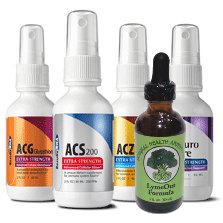

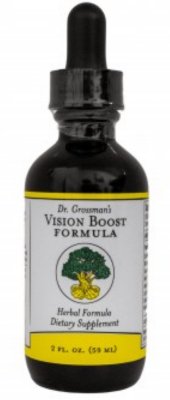
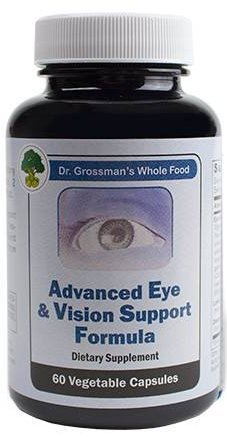
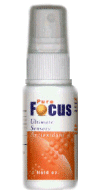


845.475.4158